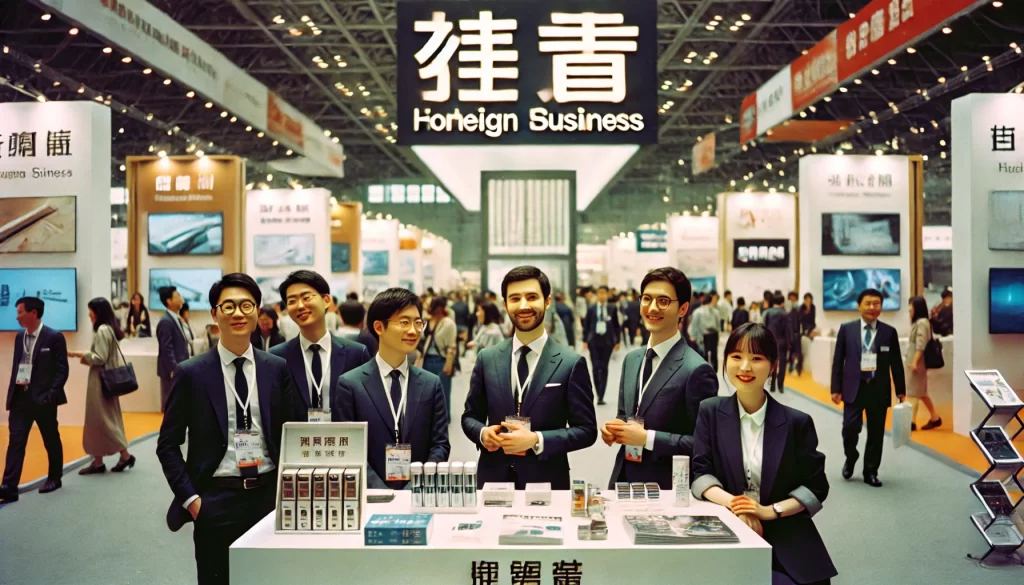
Are you tired of investing time and resources in trade exhibitions in China, only to see lackluster results? 🤔 You’re not alone. Many foreign brands struggle to crack the code of success in the bustling Chinese exhibition scene. But what if you could turn those disappointing outcomes into game-changing opportunities?
Welcome to your practical guide on “How to Maximize ROI at Trade Exhibitions in China”. This isn’t just another generic advice piece – it’s your roadmap to standing out in a sea of competitors and capturing the attention of potential customers in one of the world’s largest markets. Whether you’re a seasoned exhibitor or a newcomer to Chinese trade shows, this guide will equip you with proven strategies to transform your exhibition experience from a costly endeavor to a profitable investment.
In the following sections, we’ll dive deep into the Chinese trade exhibition landscape, walk you through pre-exhibition planning, and reveal secrets to designing an eye-catching booth. You’ll discover effective networking techniques, learn how to generate quality leads, and uncover strategies to maximize on-site sales. Finally, we’ll show you how to measure your ROI and follow up effectively post-exhibition. Get ready to elevate your trade show game and watch your return on investment soar! 📈💼
Understanding the Chinese Trade Exhibition Landscape
Key differences from Western exhibitions
- Larger scale and higher attendance
- More government involvement
- Greater emphasis on relationship-building
| Aspect | Chinese Exhibitions | Western Exhibitions |
|---|---|---|
| Scale | Massive | Moderate |
| Focus | Relationships | Transactions |
| Government Role | Significant | Limited |
Popular trade shows and their specialties
China hosts numerous specialized trade shows catering to various industries. The Canton Fair, for example, is renowned for its comprehensive product range, while CES Asia focuses on consumer electronics. Understanding these specialties helps in selecting the most appropriate exhibition for your brand.
Pre-Exhibition Planning for Success
A. Setting clear objectives and KPIs
- Define SMART goals:
- Specific
- Measurable
- Achievable
- Relevant
- Time-bound
- Example KPIs:
| KPI | Target |
|—–|——–|
| Leads generated | 100 |
| Sales closed | $50,000 |
| Brand awareness | 25% increase |
B. Researching and selecting the right exhibitions
Identify exhibitions aligned with your objectives and target market. Consider factors such as visitor demographics, industry focus, and past attendee feedback. Prioritize events with a proven track record of attracting quality leads and facilitating meaningful business connections in the Chinese market.
Designing an Attention-Grabbing Booth
Incorporating Chinese design elements
- Feng Shui principles for booth layout
- Traditional Chinese colors and symbols
- Modern Chinese architectural elements
Creating multilingual signage and materials
| Language | Purpose |
|---|---|
| Chinese | Primary audience |
| English | International visitors |
| Other | Specific target markets |
Incorporate Chinese design elements to create a cultural connection with local visitors. Use Feng Shui principles for booth layout, traditional colors like red and gold, and modern Chinese architectural motifs. This approach demonstrates respect for Chinese culture and enhances appeal.
Create multilingual signage and materials to cater to diverse audiences. Prioritize Chinese for the primary audience, include English for international visitors, and consider additional languages for specific target markets. This strategy ensures effective communication and inclusivity, maximizing engagement with potential clients.
Effective Networking and Lead Generation Strategies
Utilizing WeChat for business connections
- Scan QR codes for instant connections
- Create a business WeChat account
- Share mini-programs or H5 pages
| WeChat Feature | Business Use |
|---|---|
| Moments | Share updates |
| Groups | Industry networking |
| Mini-programs | Interactive content |
Hosting in-booth events and demonstrations
Organize product demos and interactive workshops to attract visitors. Schedule presentations by industry experts to draw crowds and establish credibility. Offer exclusive deals or limited-time promotions to create urgency and boost sales. These engaging activities not only increase foot traffic but also provide valuable opportunities for face-to-face interactions and lead generation.
Maximizing On-Site Sales Opportunities
Offering China-specific promotions and discounts
- Limited-time offers:
- “Exhibition-only” discounts
- Bundle deals for bulk purchases
- Early-bird specials for first-day buyers
| Promotion Type | Discount Range | Duration |
|---|---|---|
| Flash Sales | 20-30% off | 1-2 hours |
| Bulk Purchases | 15-25% off | Full event |
| Early-Bird | 10-15% off | Day 1 only |
Adapting pricing strategies for the Chinese market
Consider local market conditions and competitor pricing. Implement dynamic pricing based on real-time demand during the exhibition. Offer tiered pricing options to cater to different customer segments, ensuring flexibility and attractiveness to a wide range of potential buyers.
Post-Exhibition Follow-Up and ROI Measurement
Analyzing leads and prioritizing follow-ups
After the exhibition, categorize leads based on potential and urgency. Use a scoring system to prioritize follow-ups:
| Lead Category | Score | Follow-up Time |
|---|---|---|
| Hot | 8-10 | Within 48 hours |
| Warm | 5-7 | Within 1 week |
| Cold | 1-4 | Within 2 weeks |
Calculating ROI using pre-defined metrics
Calculate ROI by comparing costs to generated revenue and long-term value. Key metrics include:
- Number of qualified leads
- Cost per lead
- Conversion rate
- Total revenue generated
- Customer lifetime value
Navigating China’s trade exhibition landscape requires careful planning, strategic execution, and diligent follow-up. By understanding the local market, preparing meticulously, creating an engaging booth, networking effectively, maximizing sales opportunities, and conducting thorough post-event analysis, foreign brands can significantly boost their return on investment at Chinese trade shows.
Remember, success in China’s exhibition circuit is not just about the event itself; it’s a continuous process of relationship-building and adaptation. Embrace the unique characteristics of the Chinese market, leverage digital tools for enhanced engagement, and maintain a long-term perspective. With these strategies in place, your brand can turn trade exhibitions into powerful platforms for growth and success in the Chinese market.
